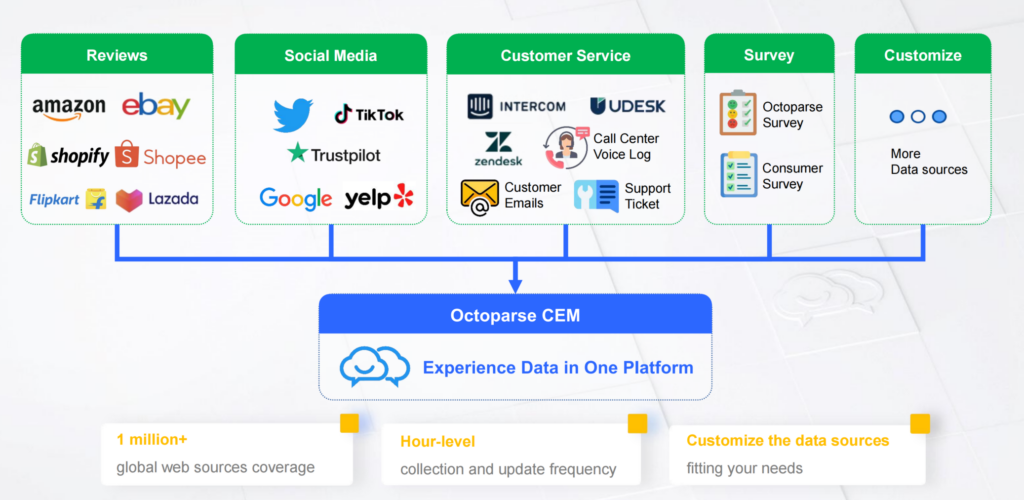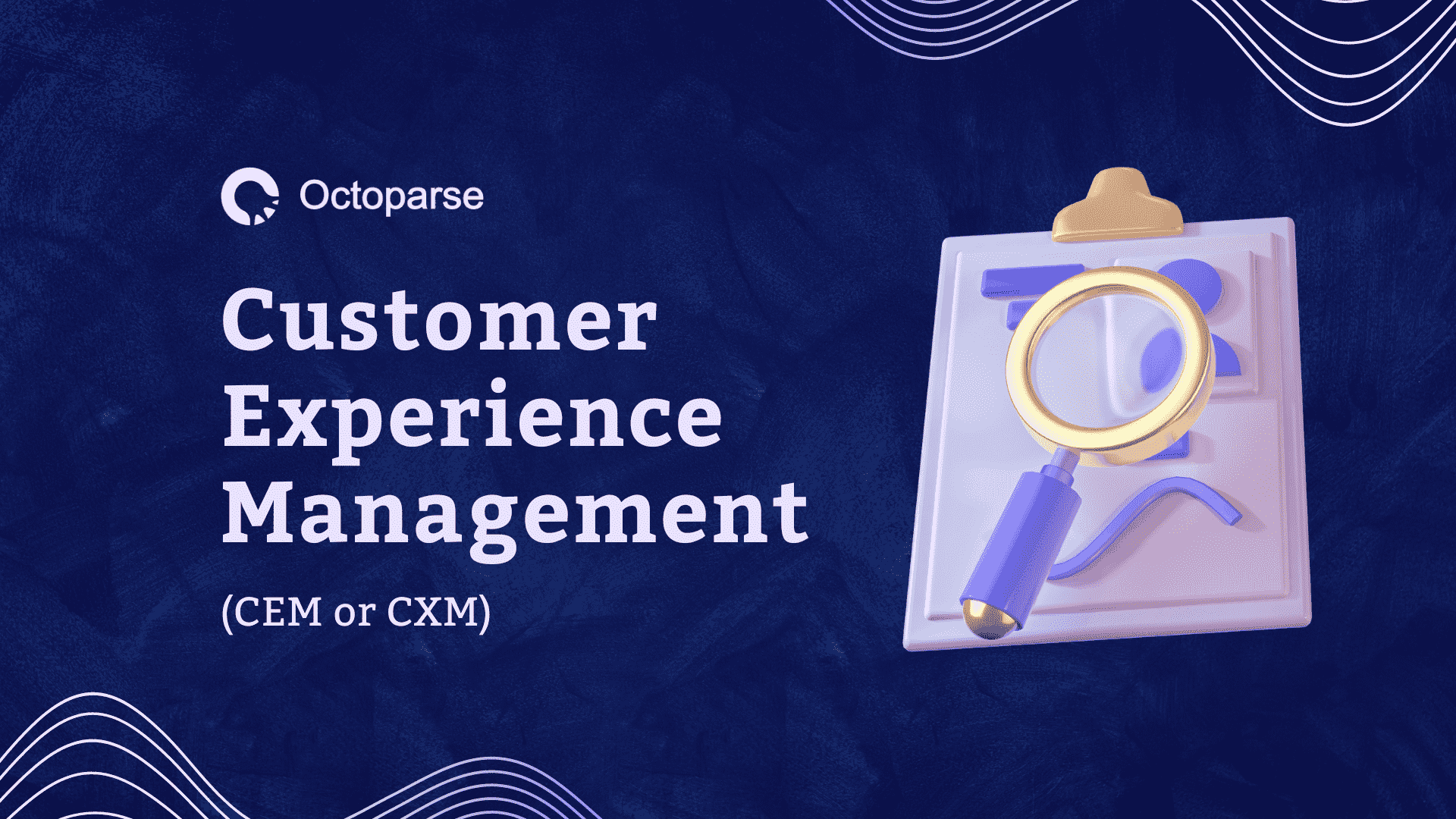Understanding your customers has perhaps never been more important—or complicated—in today´s data-driven business environment. With various digital and physical touchpoints where interactions take place, creating a holistic picture of customer sentiment might feel like an impossible task. And then along came the omnichannel approach to customer feedback — a game changer for businesses in every sector.
Redefining Omnichannel: A Unified Hub for Customer Insights
When we talk about omnichannel in the context of consumer feedback, we don’t only mean giving a consistent experience across several platforms. Instead, we’re talking about a significant paradigm shift in how firms collect, evaluate, and respond to customer feedback data.

Ultimately, this omnichannel strategy is about building a unified platform to collect input from every source possible:
· E-commerce platforms (Amazon, eBay, Shopify, Walmart, Target and etc.)
· Social media channels (Twitter, Tiktok, Reddit, Online forums, Online Communities and etc.)
· Customer service interactions (chat logs, support tickets, call centers and etc.)
· Email communications
· Survey responses
· Product reviews
· Internal databases
· Any other customized data sources unique to your business
This consolidation of vast amounts of feedback into a single cohesive system empowers businesses with a unique 360-degree perspective on their customers’ experiences and views
The Power of Unified Feedback Transforming Data into Decisions
The true value of this omnichannel approach is more than just in the quantity of data received, but rather in the analysis and application of these insights. With the help of advanced AI and machine learning technologies, businesses can find high-value patterns, trends, and insights from large amounts of feedback data from different data channels in one central hub.

This insight-based approach provides multiple transformative advantages:
· Holistic Customer Understanding: By analyzing feedback from all the channels at one-take, businesses are able to discover common trends that might not be apparent when examining channels in isolation
· Real-Time Insights: flowing continuously from all sources, companies are able to identify and act on trends earlier than ever before.
· Improved Product Development: Comprehensive feedback analysis can reveal unmet needs or common pain points, informing more customer-centric product innovations.
· Enhanced Customer Service: Support teams with visibility across all channels can offer better, more tailored help.
· More Effective Marketing: By truly understanding customer sentiment across channels, companies can create marketing campaigns that are incredibly more targeted and relevant.
· Data-Driven Decision Making: With a wealth of analyzed feedback at their fingertips, business leaders can better predict and act on trends and patterns instead of guessing what to do next based on instinct or partial information.
Overcoming the Challenges of Omnichannel Feedback Integration
While the benefits of this unified approach are clear, implementing such a system comes with its own set of challenges:
· Data Integration Complexity: Merging data from disparate sources in different formats and structures is a big technical hurdle. It requires sophisticated ETL (Extract, Transform, Load) processes and a robust data architecture.
· Data Volume and Velocity: The sheer amount of feedback data generated across all channels can be overwhelming. Businesses need powerful processing capabilities to handle this data in real-time.
· Ensuring Data Quality: With data coming from so many sources, ensuring its accuracy, relevance, and consistency is crucial but challenging.
· Extracting Meaningful Insights: Having all the data in one place is just the first step. The real challenge lies in developing AI and machine learning models that can extract truly valuable insights from this sea of information.
Case Study: BloomChic’s Omnichannel Customer Feedback Integration
Background
BloomChic is a growing plus-size women’s fashion firm that goes direct to the consumer (DTC). In an ever-changing fashion world, they recognized that relying alone on only a few data sources of consumer feedback is not enough to stay competitive. To truly understand customer desires, the brand decided to integrate feedback from all their customer feedback channels—ecommerce platforms, their own website, and social media channels. BloomChic aimed to gain a holistic view of customer sentiment and identify actionable insights that would inform their product development and marketing strategies.

Challenge
Before implementing their omnichannel feedback strategy, BloomChic struggled to identify particular customer preferences across many platforms. Customer feedback was dispersed throughout their website, social media networks such as Instagram and TikTok, and major e-commerce sites. This made it difficult to obtain a clear picture of customer needs and frustrations.
BloomChic also faced strong competition in the plus-size clothing sector, where minute design elements can have a significant impact on customer happiness. They sought a mechanism to turn this dispersed data into useful insights that would give them an advantage over their competition.
Solution
BloomChic chose to use an omnichannel feedback system that combined data from all major touchpoints, including their own e-commerce site, third-party platforms, and social media platforms. This enabled them to regularly evaluate consumer sentiment, gathering not only opinions on their own products but also remarks from competitors’ customers.

This integrated strategy discovered one notable insight: numerous buyers across all platforms frequently expressed a need for dresses with pockets, which both BloomChic’s and its competitors’ products lacked. By gathering feedback from several channels in one location, the brand identified a clear opportunity that would have been missed without the integrated data.
Results
BloomChic made use of this insightful observation to improve their products and add dresses with pockets, a feature that was a direct result of the integrated feedback. The answer was largely enthusiastic. Not only did their pocketed dresses become popular with existing consumers, but the word spread on social media, enticing new shoppers who had long sought this feature.
The advantages of integrating omnichannel data became obvious. Customer satisfaction improved, with many applauding the brand for being responsive to their requirements. Sales of the new designs increased dramatically, and BloomChic acquired a competitive edge by responding to a major client demand expressed across several channels.


The Future of Customer Feedback: AI-Driven Insights at Scale
Looking ahead, the businesses that succeed will be those that can not only gather feedback from multiple channels but also quickly make sense of it and take action. The secret to staying ahead is using advanced AI and machine learning to handle large amounts of unstructured data and turn it into practical insights.
By adopting an omnichannel approach to customer feedback, businesses can:
- Forecast market trends and consumer demands with enhanced precision
- Offer personalized products, services, and experiences for each customer
- Identify possible issues promptly and resolve them before they escalate
- Continuously improve the customer experience using real-time insights
As customer expectations keep evolving, this data-driven approach gives companies a competitive edge that can be the difference between success and failure.
Embracing the Omnichannel Feedback Movement
Today, having a true omnichannel feedback strategy isn’t just a nice-to-have—it’s essential for businesses wanting to succeed in the digital world. While the process of putting it into place can be challenging, the benefits in terms of better customer satisfaction, increased innovation, and business growth make it a worthwhile effort.
For companies ready to take this step, tools like Octoparse CEM provide powerful ways to gather feedback from any channel, whether it’s external platforms or internal systems. These technologies help businesses navigate the complexities of data integration and analysis, allowing for smarter, data-driven decisions.
In a world where understanding your customer is the ultimate advantage, embracing omnichannel feedback isn’t just about keeping up—it’s about leading the way into a future where every customer interaction provides valuable insights to fuel business success.



